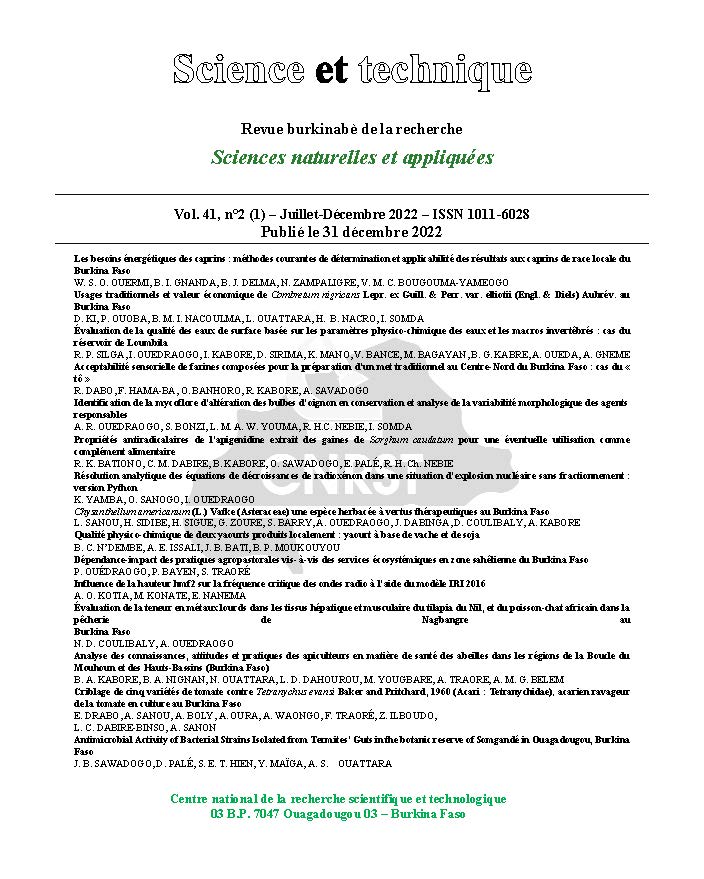Evaluation of heavy metal content in liver and muscle tissue of Nile tilapia and African catfish in the Nagbangre fishery in Burkina Faso
Keywords:
heavy metals, fish, contamination, Burkina FasoAbstract
Open aquatic ecosystems are increasingly contaminated by various wastes, especially those generated by human activities. The objective of the present study is to determine the levels of five (05) heavy metals (Cr, Co, Cd, Pb, As) in the liver and muscle tissues of Nile tilapia and African catfish caught in the Nagbangré fishery. Thirty individuals of each species were collected from the fishermen. The liver and muscle tissues were collected, pretreated (crushed, potted and stored at -20°C) before being sent to the analytical laboratory. The technique of flame atomic absorption spectrophotometry was used to determine the content of these heavy metals. The analyses showed that the two species studied were contaminated by the five heavy metals. The average muscle lead (2.33 mg/kg in African catfish and 3.07 mg/kg in tilapia) and cadmium (0.17 mg/kg in African catfish and 0.31 mg/kg in tilapia) contents are higher than the WHO and ABNORM accepted values. Regular consumption of fish contaminated with these two metals (Pb and Cd) could constitute a public health problem. A monitoring of the concentration of these metals is necessary to reduce the possible consequences for the consumer.

